
How to Prune Cherry Trees: A Step-by-Step Guide for Beginners to Grow Healthy & Fruitful Trees
🍒 Pruning cherry trees is both an art and a science, crucial for enhancing fruit production and maintaining tree health. Whether you’re a novice gardener or looking to refine your skills, mastering the basics of cherry tree pruning can significantly impact your harvest and tree vitality. How to Prune Cherry Trees: A Step-by-Step Guide for Beginners demystifies the process, from understanding pruning objectives to practical techniques that ensure your cherry trees thrive season after season. Let’s dive into the essentials of nurturing beautiful cherry trees through effective pruning practices.
Table of Contents
ToggleUnderstanding the Importance of Pruning Cherry Trees 🍒✂️
Pruning cherry trees is essential for their overall health and productivity. Here’s why:
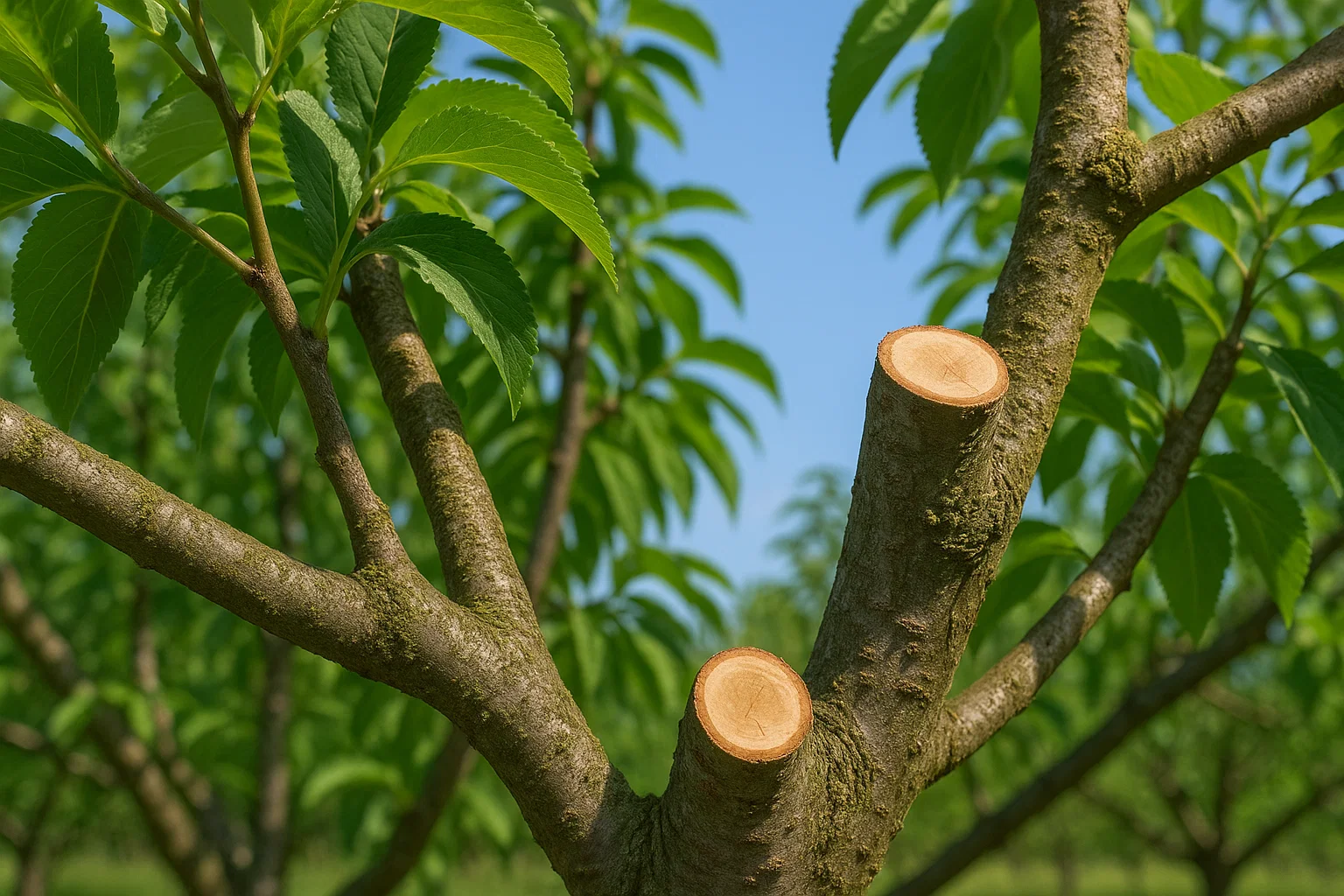
- Healthier Growth 🌱: Regular pruning removes dead or diseased branches, helping the tree focus its energy on stronger, healthier parts. This ensures robust growth and a sturdy structure.
- Better Fruit Production 🍏: Pruning improves sunlight exposure and airflow within the tree, which enhances fruit quality and yield. Fewer crowded branches mean more room for the cherries to grow big and delicious!
- Disease Prevention 🦠: By cutting away weak or damaged wood, you reduce the chances of diseases spreading throughout the tree. Healthy cuts encourage faster healing and better protection against pests.
- Aesthetic Appeal 🌳: A well-pruned cherry tree looks neat and balanced, making it a beautiful addition to your garden. Plus, it’s easier to manage and care for!
Pruning isn’t just about cutting; it’s about giving your cherry tree the best chance to thrive! 🌟
Tools You Need to Prune Cherry Trees 🛠️🌳
To prune your cherry tree properly, you’ll need the right tools. Here’s a quick guide to what you’ll need:

- Pruning Shears ✂️: Ideal for cutting small branches (up to ¾ inch thick). They’re perfect for fine cuts and detailed work. Make sure they’re sharp for clean cuts!
- Loppers 🔨: Great for branches that are a bit thicker (1-2 inches). Loppers have longer handles, giving you more leverage to make easier cuts.
- Pruning Saw 🪚: Use this for cutting larger branches (2+ inches). It’s designed to make smooth, clean cuts without damaging the tree.
- Gloves 🧤: Protect your hands from sharp tools and rough bark. Plus, gloves keep your hands clean!
- Tree Sealant (Optional) 🛡️: If you cut any large branches, you might want to use a sealant to help prevent infections.
Having the right tools ensures a smooth, efficient pruning experience. 🌿
Best Time to Prune Cherry Trees ⏰🌸
The timing of your pruning is crucial for the health and success of your cherry tree. Here’s when to do it for the best results:
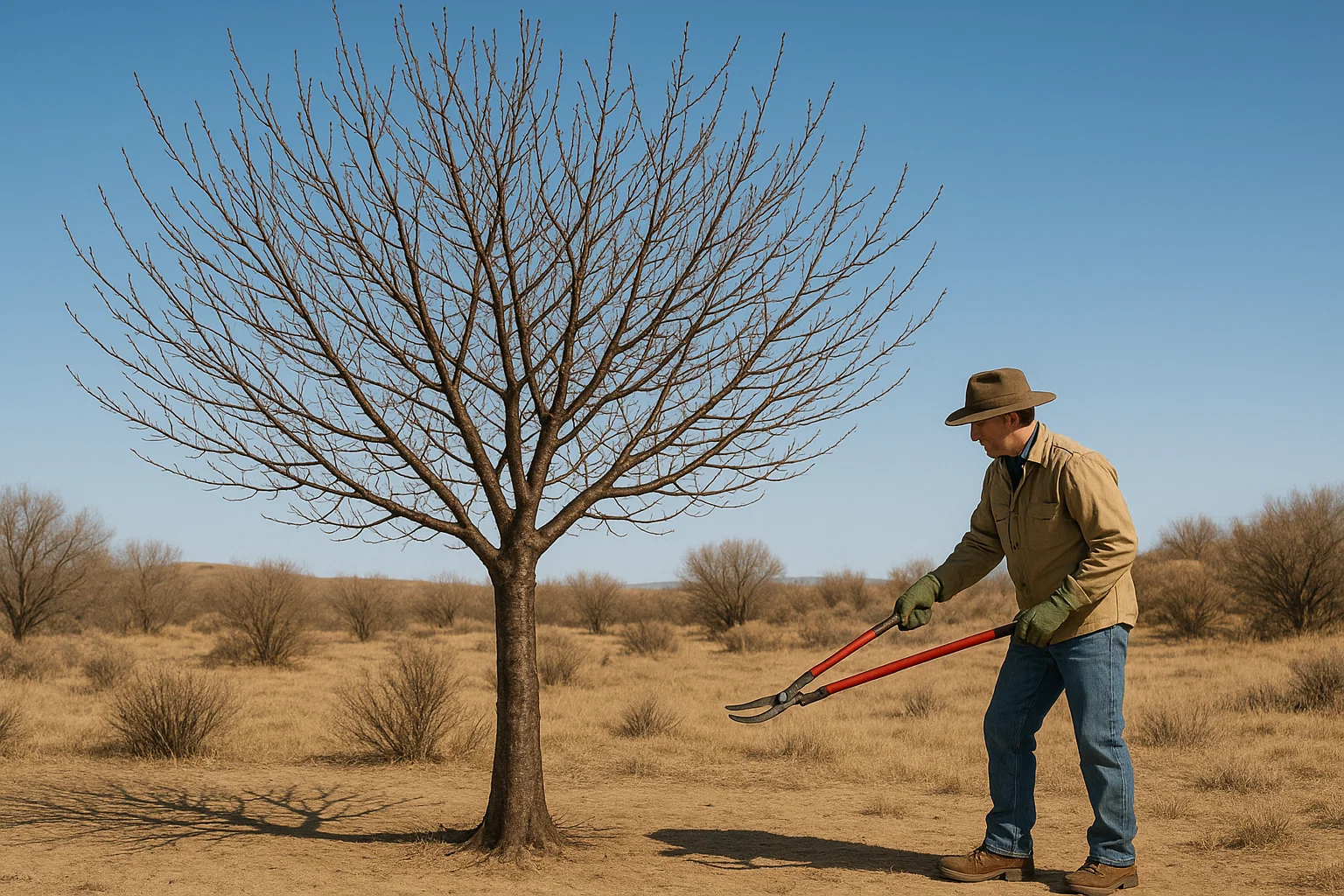
Late Winter to Early Spring 🌱
The ideal time to prune cherry trees is when they are still dormant, typically in late winter or early spring before they start to bud. This allows the tree to heal quickly and encourages strong, healthy growth once the warmer weather arrives.
Avoid Fall 🍂
Pruning in the fall is not recommended. Cutting back your cherry tree during this time can leave it vulnerable to cold weather, as new growth may begin that could be damaged by frost. Additionally, pruning in fall can encourage the tree to use energy in ways that don’t benefit its long-term health.
Look for Calm Weather 🕒
Make sure you prune during a dry, calm period, avoiding heavy rain or freezing temperatures. The tree will be less stressed, and your cuts will heal more effectively.
Pruning at the right time ensures your cherry tree has the best chance to grow strong and healthy throughout the year! 🌟
Identifying the Right Branches to Prune 🌳✂️
Knowing which branches to prune is key to a healthy, productive cherry tree. Here’s how to identify the right ones:

Dead or Diseased Branches 💀
These are the first to go. Look for branches that are brown, shriveled, or brittle. Removing them helps prevent disease from spreading to the rest of the tree.
Crossing Branches 🔀
If branches rub against each other, they can cause damage, creating wounds that invite pests and disease. Prune the weaker or less desirable branch to allow the others to grow freely.
Overgrown or Weak Branches 🌿
If a branch is too long or growing in a direction that makes the tree unbalanced, cut it back. Also, trim any branches that seem weak and spindly—they won’t support good fruit production.
Suckers and Water Sprouts 🌱
These fast-growing, thin shoots appear at the base or along branches. They drain the tree’s energy and don’t produce fruit, so they should be removed.
By removing the right branches, you help your cherry tree grow stronger, healthier, and more fruitful. 🌸
The Step-by-Step Pruning Process ✂️🌳
Pruning your cherry tree doesn’t have to be complicated. Just follow these simple steps for a healthy and fruitful tree:
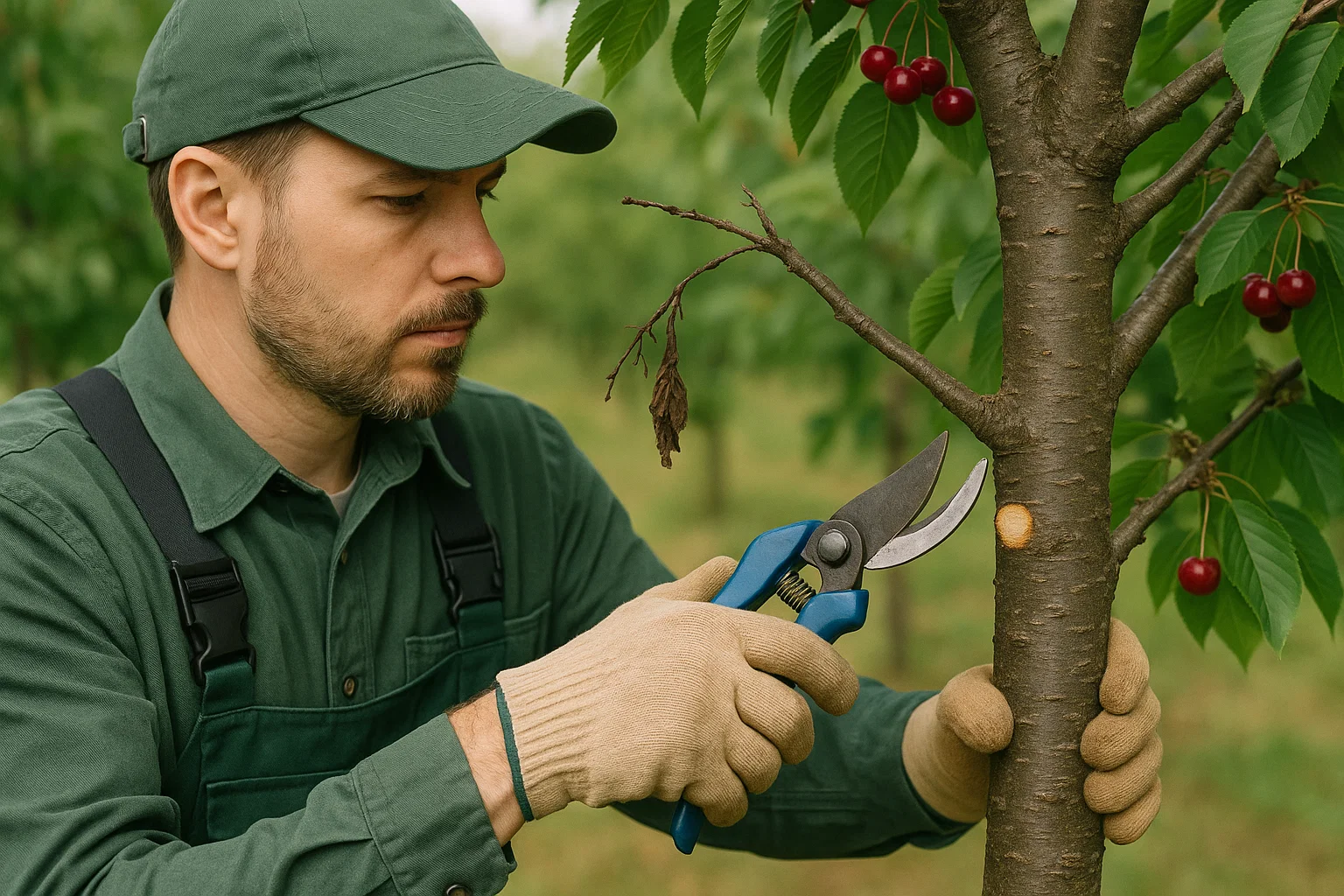
🛠️ Step 1: Prepare Your Tools and Workspace 🛠️
Before you start, clear the area around the tree to make moving around easy. Ensure your pruning shears, loppers, and pruning saw are sharp and clean. This ensures clean cuts and minimizes stress on the tree.
💀 Step 2: Remove Dead or Damaged Branches 💀
Start by identifying and removing any dead, diseased, or broken branches. These branches can harm the tree if left untreated. Cut them as close to the trunk as possible without damaging the main stem. Always make clean cuts to encourage faster healing and to prevent the spread of disease.
🌿Step 3: Thin Out the Canopy 🌿
Next, focus on thinning out the inner branches to improve airflow and sunlight exposure. Look for crowded, crossing, or inward-growing branches. By cutting these away, you create more space for healthy growth and reduce the risk of disease.
🏡 Step 4: Shape the Tree 🏡
After thinning, shape the tree to maintain a balanced structure. Aim for an open, vase-like shape that lets sunlight reach all parts of the tree. Trim any branches that grow at odd angles or that could interfere with the tree’s symmetry. Be careful not to cut too much—keeping a natural shape is essential for the tree’s health.
🌟 Step 5: Final Touches 🌟
Stand back and assess the overall shape of the tree. If any branches look out of place or are too long, trim them carefully. The goal is to leave a tree that is well-balanced and ready for a season of strong, healthy growth.
By following this step-by-step pruning process, your cherry tree will have a sturdy structure, improved airflow, and the best chance for producing beautiful fruit! 🍒🌳
Pruning Techniques to Keep in Mind ✂️💡
When pruning your cherry tree, it’s important to use the right techniques to ensure the best results. Here are some tips to keep in mind:
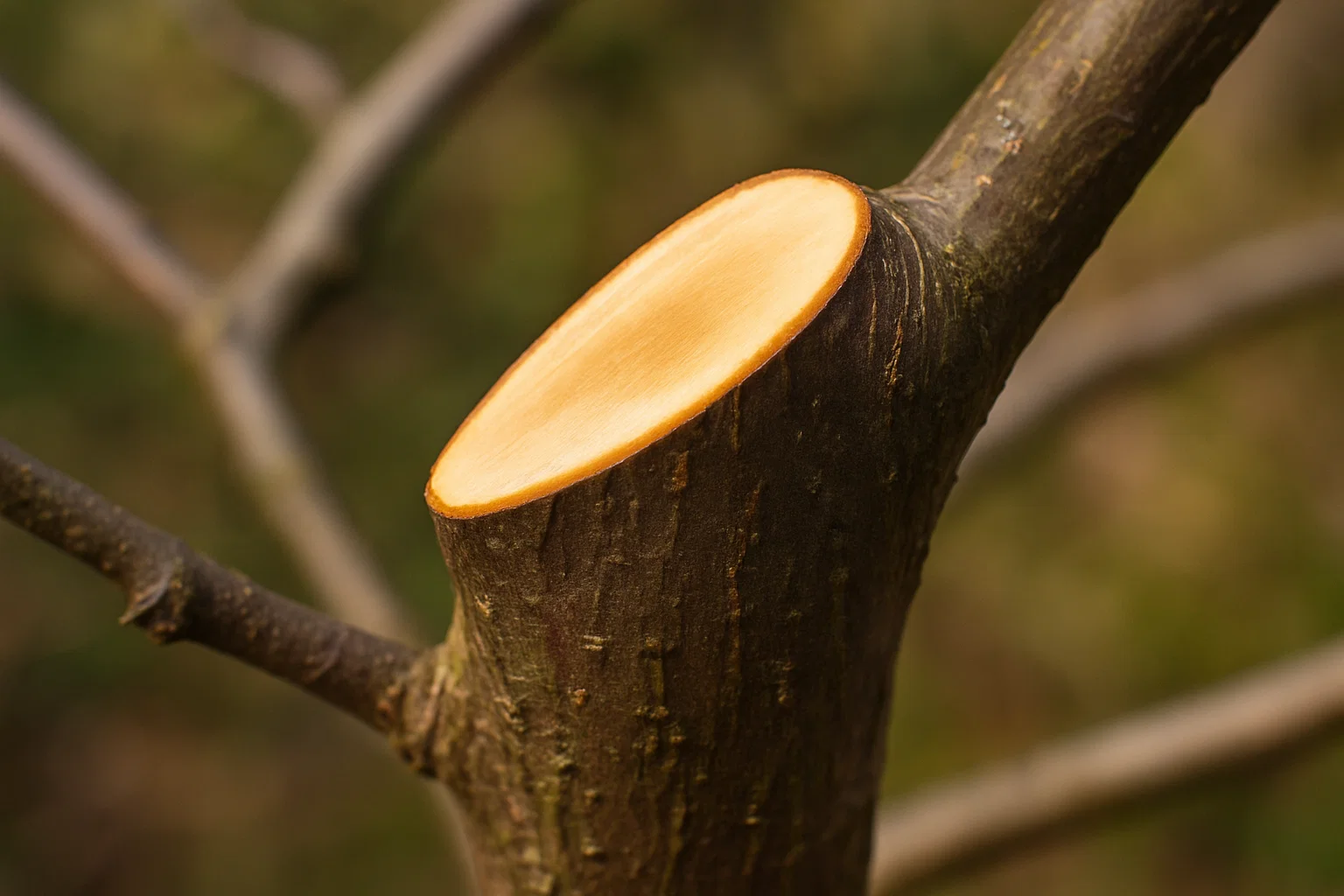
- Proper Cutting Angles 🏞️: Always make cuts at a slight angle, about 45 degrees. This allows water to run off the cut, preventing rot. It also helps the tree heal faster by encouraging callus tissue growth.
- Don’t Over-Prune ❌: While pruning is beneficial, removing too many branches can stress the tree. Only prune about 20-30% of the tree’s branches in one season to avoid weakening the tree’s overall structure.
- Leave Healthy Branches 🌿: When cutting, make sure to leave healthy, well-positioned branches that have a good chance of growing strong. Avoid cutting too close to the main trunk—leave a small collar (the ridge where the branch meets the trunk) to help the tree heal.
- Make Clean Cuts 🪚: Always use sharp, clean tools to make your cuts. Ragged cuts can harm the tree, leading to infection or disease. Sharp tools create smoother cuts that heal quicker.
- Cut at the Right Time 🕒: Prune your cherry tree during its dormant period (late winter to early spring) to avoid sap loss and promote faster recovery.
By following these pruning techniques, you’ll encourage healthy growth and ensure your tree thrives for years to come! 🌳🍒 For detailed instructions tailored to new gardeners, explore How to Prune Cherry Trees: A Step-by-Step Guide for Beginners and prune with confidence.
Aftercare: Helping Your Cherry Tree Recover 🌱💧
Once you’ve finished pruning your cherry tree, proper aftercare is essential to ensure it heals well and continues to grow strong. Here’s what you need to do:
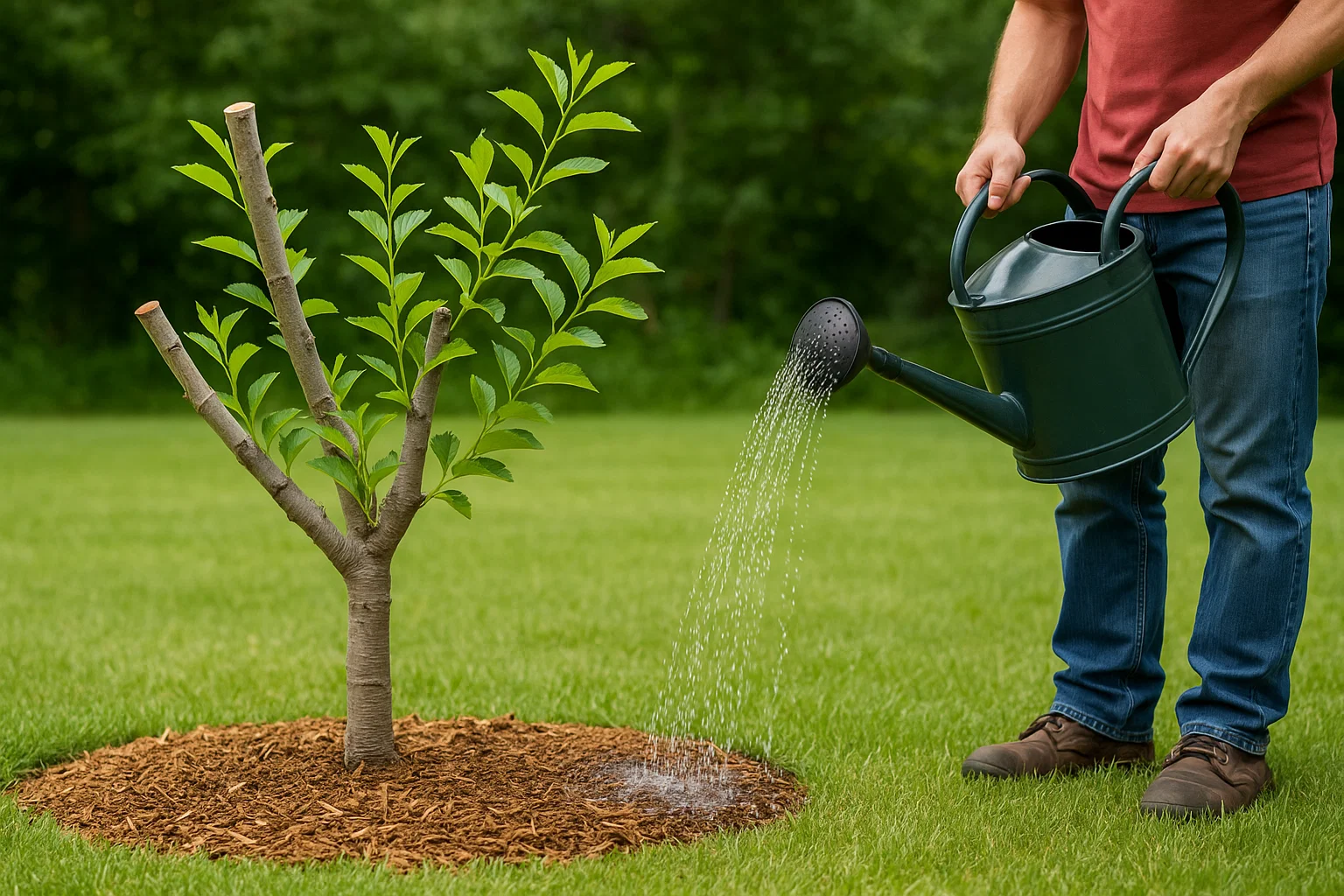
Watering 💦
After pruning, make sure your tree gets plenty of water. Deep watering helps the roots absorb nutrients and encourages new growth. Keep the soil consistently moist but not soggy, especially during the growing season.
Fertilization 🌿
A light feeding with a balanced fertilizer can give your tree the nutrients it needs to bounce back after pruning. Avoid over-fertilizing, as this can lead to excessive, weak growth. Opt for slow-release fertilizers in the spring to support steady growth.
Monitor for Disease 🦠
Check your tree regularly for signs of infection, like discolored leaves, oozing sap, or unusual growth. If you see anything concerning, take action immediately by removing infected parts and treating with a fungicide if needed.
Tree Sealant (Optional) 🛡️
For larger cuts, applying a tree sealant can help protect the wound from pests and disease. However, many experts suggest that it’s not always necessary unless the cut is large. Always use a sealant specifically designed for trees to avoid trapping moisture that could cause rot.
Mulch 🌾
Add a layer of mulch around the base of the tree to retain moisture, prevent weeds, and maintain a stable root temperature. Just make sure to keep the mulch a few inches away from the trunk to avoid rot.
By following these aftercare tips, your cherry tree will heal quickly and be ready for a season of healthy growth and delicious fruit! 🍒🌳
Common Mistakes to Avoid When Pruning Cherry Trees ⚠️✂️
Pruning can be tricky, especially for beginners. To ensure your cherry tree thrives, avoid these common mistakes:
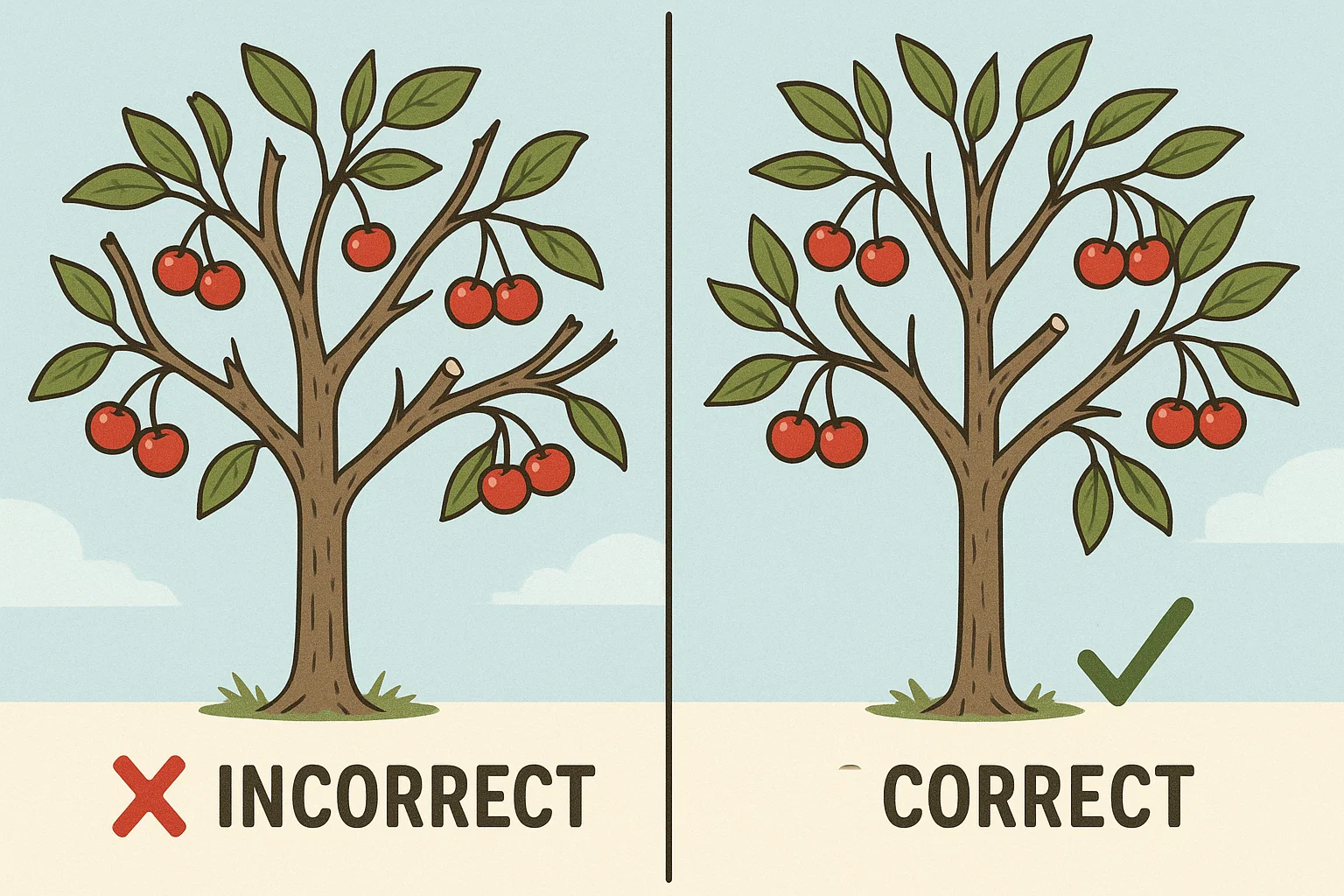
Pruning Too Much ❌
Over-pruning can stress your tree and stunt its growth. Never remove more than 20-30% of the tree’s branches in one go. Focus on thinning and shaping rather than excessive cutting.
Pruning at the Wrong Time 🕒
Pruning during the wrong season can harm your tree. Avoid pruning in fall or early summer, as it can cause unnecessary stress and lead to frost damage or sap loss. Stick to late winter or early spring while the tree is dormant.
Cutting Too Close to the Trunk 🔪
When removing branches, avoid cutting too close to the trunk or main stems. Always leave a small branch collar, the natural bulge where the branch connects to the tree. Cutting too close can damage the tree and hinder proper healing.
Using Dull or Dirty Tools 🛠️
Pruning with dull or unclean tools can cause jagged cuts, making it harder for the tree to heal and inviting infection. Always ensure your tools are sharp and sterilized before use.
Ignoring the Tree’s Shape 🌳
Pruning without considering the tree’s natural shape can lead to poor growth. Aim to maintain a balanced, open structure that allows light and air to reach all parts of the tree. Avoid making random cuts that disrupt its natural growth pattern.
By steering clear of these mistakes, you’ll help your cherry tree grow stronger, healthier, and more fruitful! 🍒🌿 To avoid common pitfalls and prune with confidence, refer to How to Prune Cherry Trees: A Step-by-Step Guide for Beginners for expert-backed guidance.
When to Seek Professional Help 🧑🔧🌳
While pruning is a valuable skill to learn, there are times when it’s best to call in a professional. Here are a few situations where you might want expert assistance:
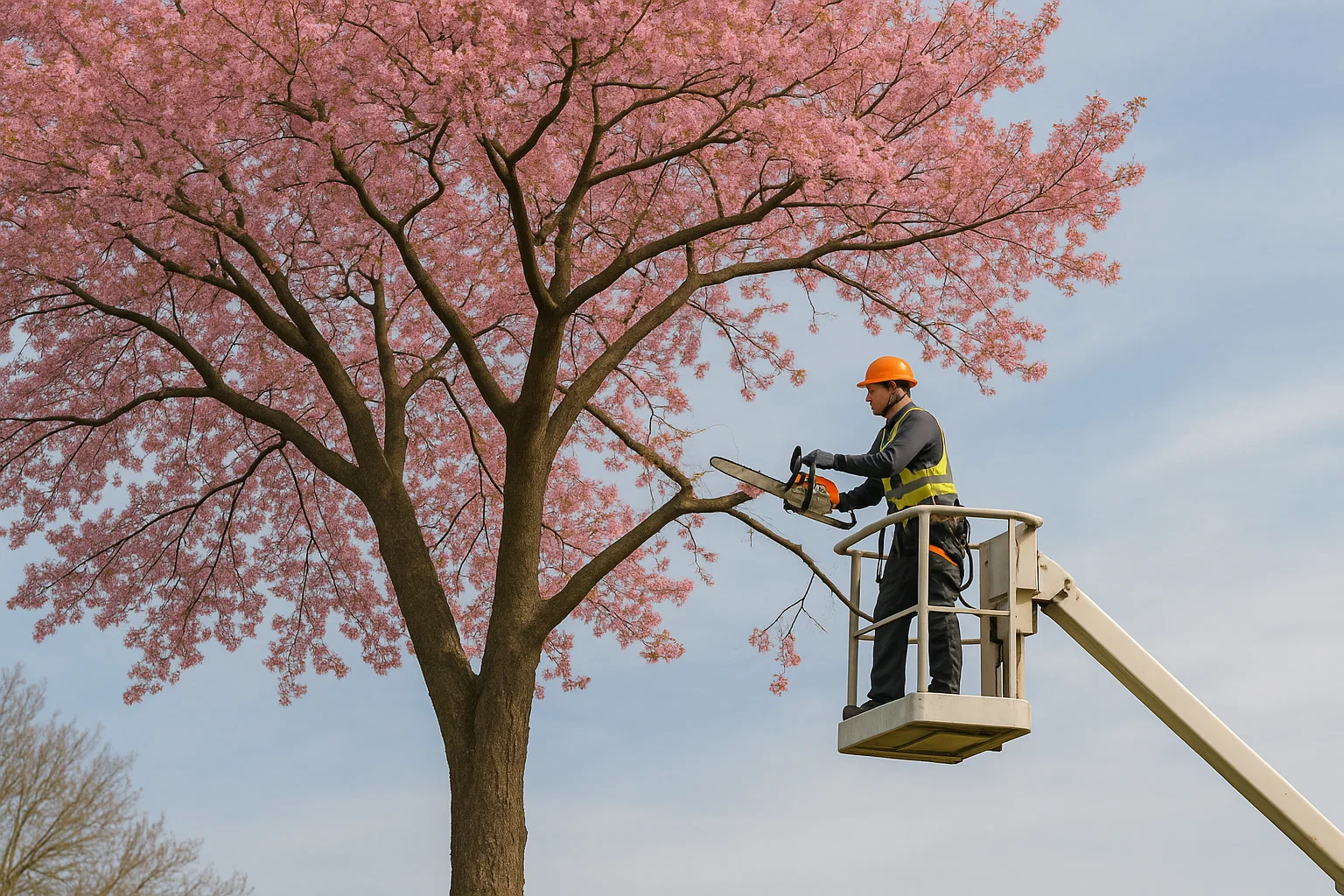
- Large or Mature Trees 🌳: If your cherry tree has grown large or is difficult to reach, pruning can become a dangerous task. Professionals have the proper equipment and experience to safely prune tall or sprawling trees without risk.
- Complex Tree Structures 🔀: Sometimes, the tree’s structure is more complex, with tangled or hard-to-reach branches. An expert can evaluate the tree’s needs and prune in a way that maintains its health and shape without causing harm.
- Uncertainty About What to Cut 🤔: If you’re unsure which branches to prune or how to shape the tree, a professional can provide guidance. They can identify weak or damaged wood that might not be obvious to an untrained eye.
- Health Concerns 🦠: If your tree is diseased or suffering from pests, it might require more specialized care. Professionals can diagnose the issue and prune accordingly, ensuring the tree heals and recovers properly.
- Lack of Time or Confidence ⏳: If you’re short on time or not confident in your pruning skills, hiring a professional can save you the frustration and help ensure your cherry tree gets the best care.
By seeking professional help when needed, you’ll ensure your cherry tree gets the best treatment for long-term health and productivity! 🌿🍒
Final Thoughts 🌟🌳
Pruning your cherry tree properly is essential for its health, structure, and fruit production. By understanding the right techniques, using the proper tools, and knowing when to seek professional help, you can ensure your tree thrives for years to come. For a clear and simple approach, follow How to Prune Cherry Trees: A Step-by-Step Guide for Beginners to confidently care for your tree from the ground up.

Remember, pruning isn’t just about cutting; it’s about fostering growth, preventing diseases, and enjoying the beauty and bounty of your cherry tree. Stay patient, stay proactive, and your tree will reward you with healthy growth and delicious fruit! 🍒💚
Frequently Asked Questions (FAQ)
When is the best time to prune cherry trees?
The best time to prune cherry trees is in late winter or early spring, just before the growing season begins. This helps avoid damage from frost and encourages healthy growth. 🌸
How do I know which branches to prune?
Prune any dead, diseased, or damaged branches first. Then, focus on removing any crossing or inward-growing branches to improve air circulation and sunlight exposure. 🌿
Can I prune my cherry tree too much?
Yes! Over-pruning can weaken the tree and reduce fruit production. Stick to removing no more than 20-30% of the tree’s total growth in one season. ✂️
Should I prune cherry trees every year?
While it’s not always necessary to prune every year, regular annual pruning helps maintain a healthy structure and supports fruiting. 🌱
How do I prune cherry trees for better fruit production?
To improve fruit production, prune to create an open-center shape that allows sunlight to reach all parts of the tree. This encourages better flowering and fruiting. 🍒
Can I prune my cherry tree in the fall?
It’s not recommended to prune in the fall, as it can lead to new growth that is vulnerable to winter damage. Stick to late winter or early spring instead. ❄️
Do I need special tools to prune a cherry tree?
A sharp pair of pruning shears for small branches and a pruning saw for larger branches are usually enough. Always disinfect tools before and after use to prevent spreading diseases. 🛠️
Can I prune cherry trees if they are young?
Yes! Young cherry trees can be pruned to establish a strong structure. Focus on creating a good framework by selecting the best central leader and side branches. 🌳
